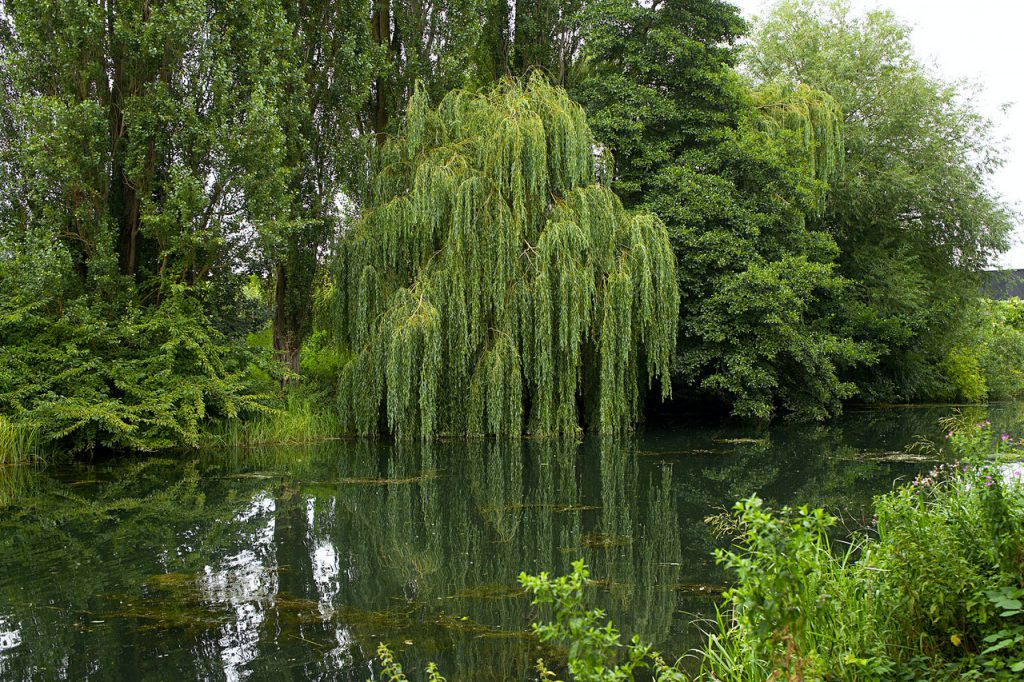Weeping Willow Bonsai Tree

Weeping Willow Bonsai trees are popular because of their graceful appearance and delicate branches. They are also relatively easy to care for, making them a good choice for beginners. In order to keep your weeping willow healthy and looking its best, it is essential to follow a few simple guidelines for care and maintenance.
Care and Maintenance
Type of Soil and Potting
Soil is an essential element for the growth of any tree, including a weeping willow bonsai tree. The best type of soil to use for a weeping willow bonsai is one that is well-drained and slightly acidic. A potting mix that contains peat moss, vermiculite, and perlite is ideal.
To pot the tree, place the soil in the pot so that the top of the root ball is level with the surface of the soil. Be sure not to pack the soil down too tightly, as this can damage the roots.
Watering and How Often
Weeping willow bonsai trees should be watered regularly. Make sure the pot has drainage holes in the bottom so the soil can dry out between waterings. A good rule of thumb is to water when the top inch of soil feels dry to the touch. Finally, avoid getting the leaves and branches wet when watering, which can lead to fungal problems.
Fertilizing and How Often
You have a few options when it comes to fertilizing your weeping willow bonsai tree. A general all-purpose fertilizer can be used, but it is recommended that you use a liquid fertilizer specifically for bonsai trees. This is because they are often higher in nitrogen and potassium than traditional fertilizers.
Fertilize your tree every other week in the spring and summer and once a month in the fall. Be sure to follow the instructions on the package, as too much fertilizer can be harmful to your tree.
Temperature / Winter care
The weeping willow bonsai tree is a popular choice for anyone looking for a bonsai tree. This type of tree can be easy to care for, but it’s important to take steps to protect it in winter. One of the most important things you can do is make sure the tree is in an area that will not be exposed to freezing temperatures. If you live in a cold climate, you may need to move the tree indoors or into a greenhouse during winter. You can also protect the tree by covering it with a frost blanket or wrap. Another thing to keep in mind is that weeping willow bonsai trees need plenty of water, even in winter. Be sure to keep the soil moist but not wet, and don’t let the roots freeze.
Repotting
Repotting should only be done every other year or when the tree becomes root-bound
The best time to repot a bonsai is in the spring when the tree is coming out of its winter dormancy. Repotting should only be done every other year or when the tree becomes root-bound. If you repot too often, you can weaken the tree.
When you repot a bonsai, you should remove as much of the old soil as possible and replace it with fresh soil. Be sure to pack the soil tightly around the roots so that the tree will not become uprooted.
Pruning and wiring
Pruning and wiring are two of the essential techniques for training a weeping willow bonsai tree. Pruning helps to control the size and shape of the tree, while wiring helps create the desired bends and curves in the branches.
Before you begin pruning or wiring, it is crucial to understand how these techniques work. Pruning involves removing unwanted branches from the tree, while wiring involves using metal wires to bend and shape branches. When done correctly, pruning and wiring can help create a beautiful weeping willow bonsai tree that looks natural and graceful.
To prune a weeping willow bonsai tree, start by removing any dead or dying branches. Next, remove any branches that are growing in the wrong direction or are too small for the size of the tree.
It is recommended to prune in the winter months when they are in a more dormant state. Pruning during this time will help stimulate new growth and ensure an attractive tree. Winter pruning also helps maintain the tree’s shape and limits the amount of new wood that needs to be cut back in the spring.
For more caring tips please visit our detailed post on caring for a weeping willow bonsai tree.